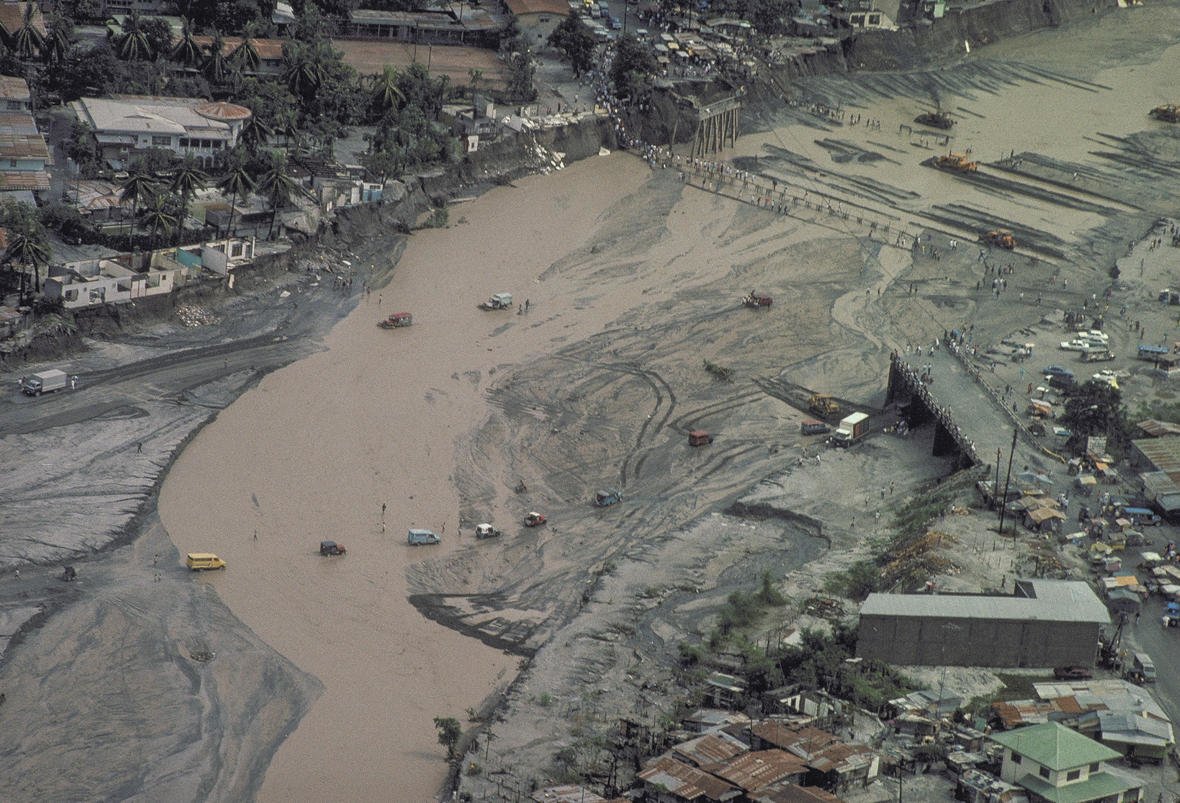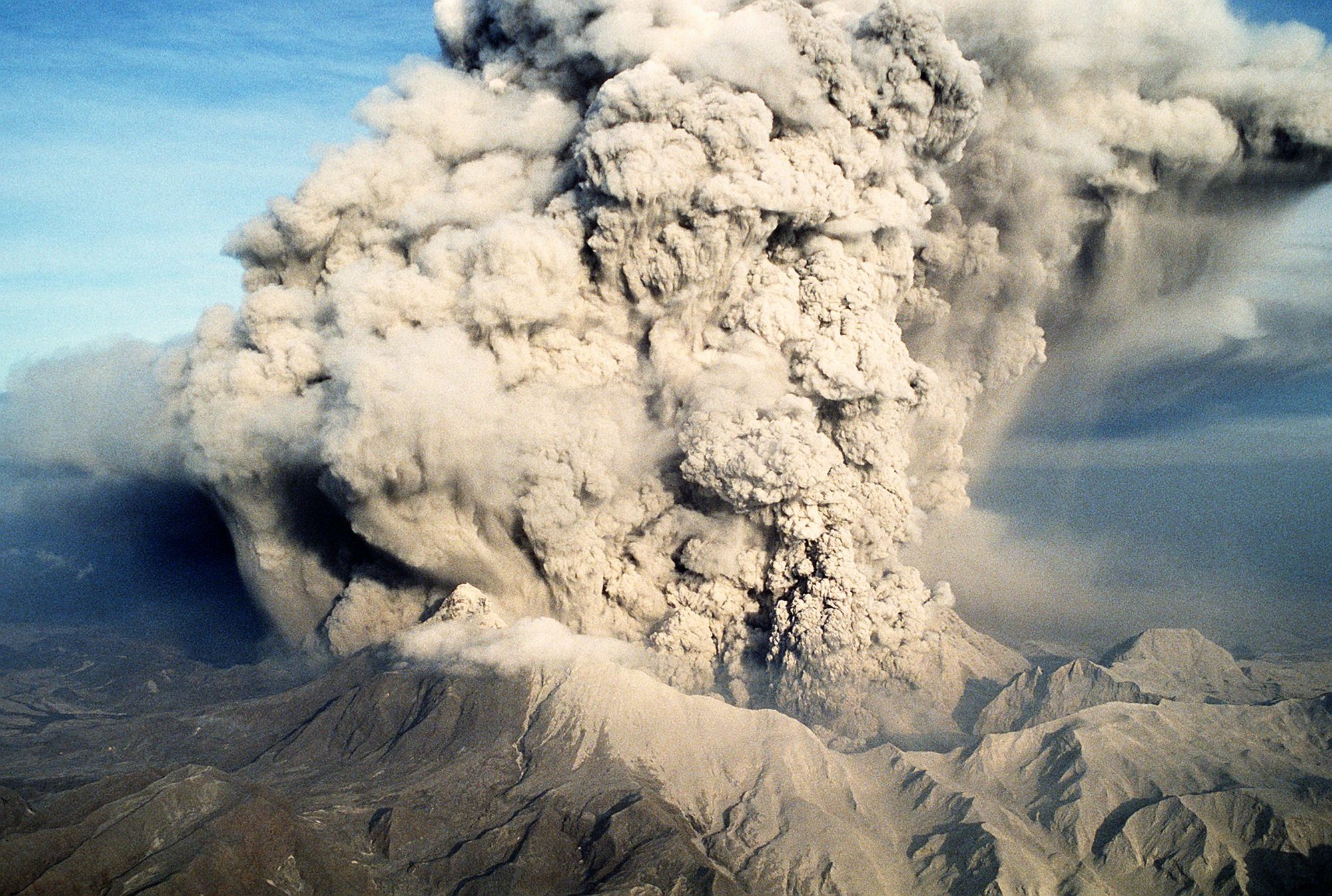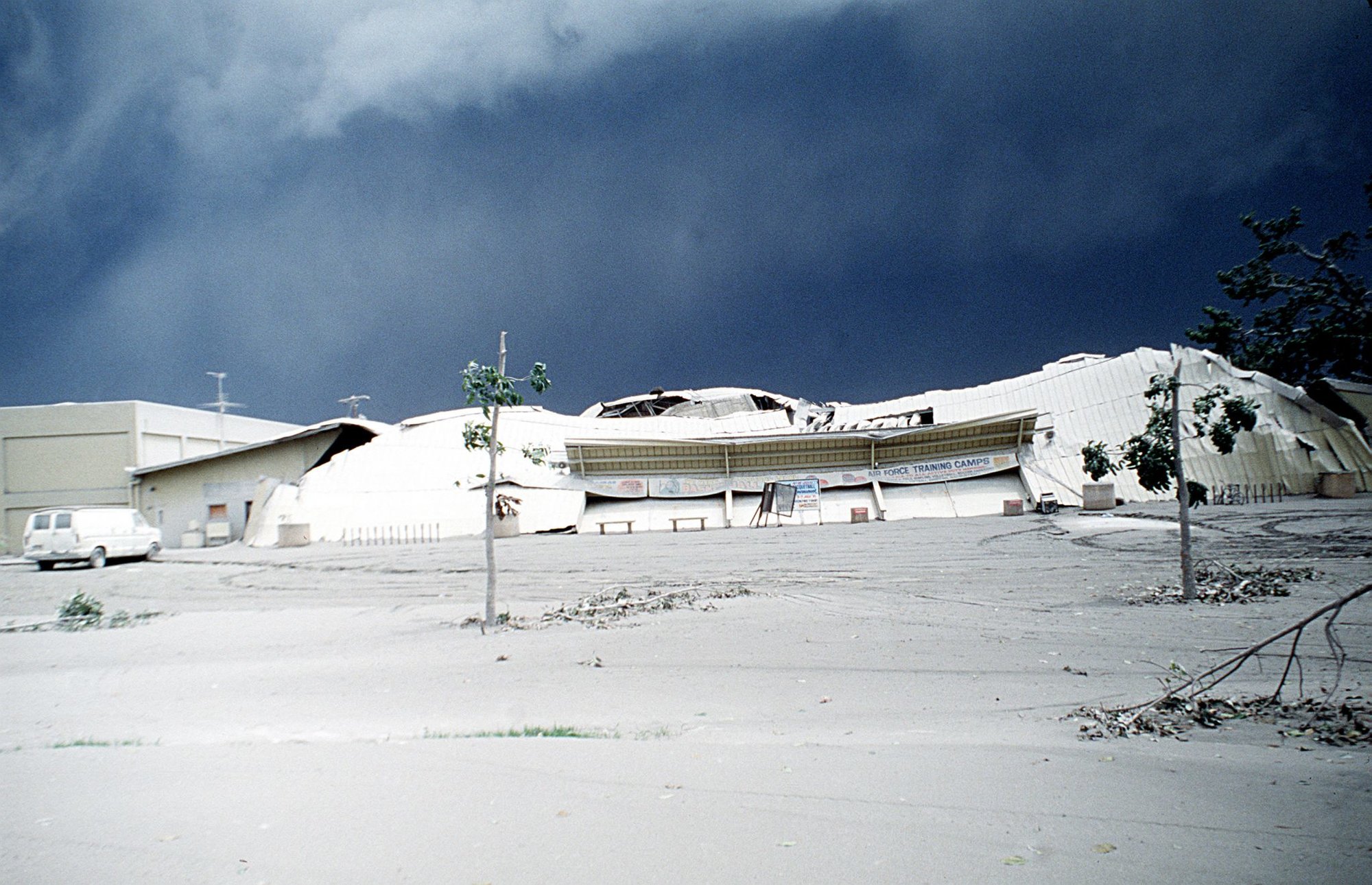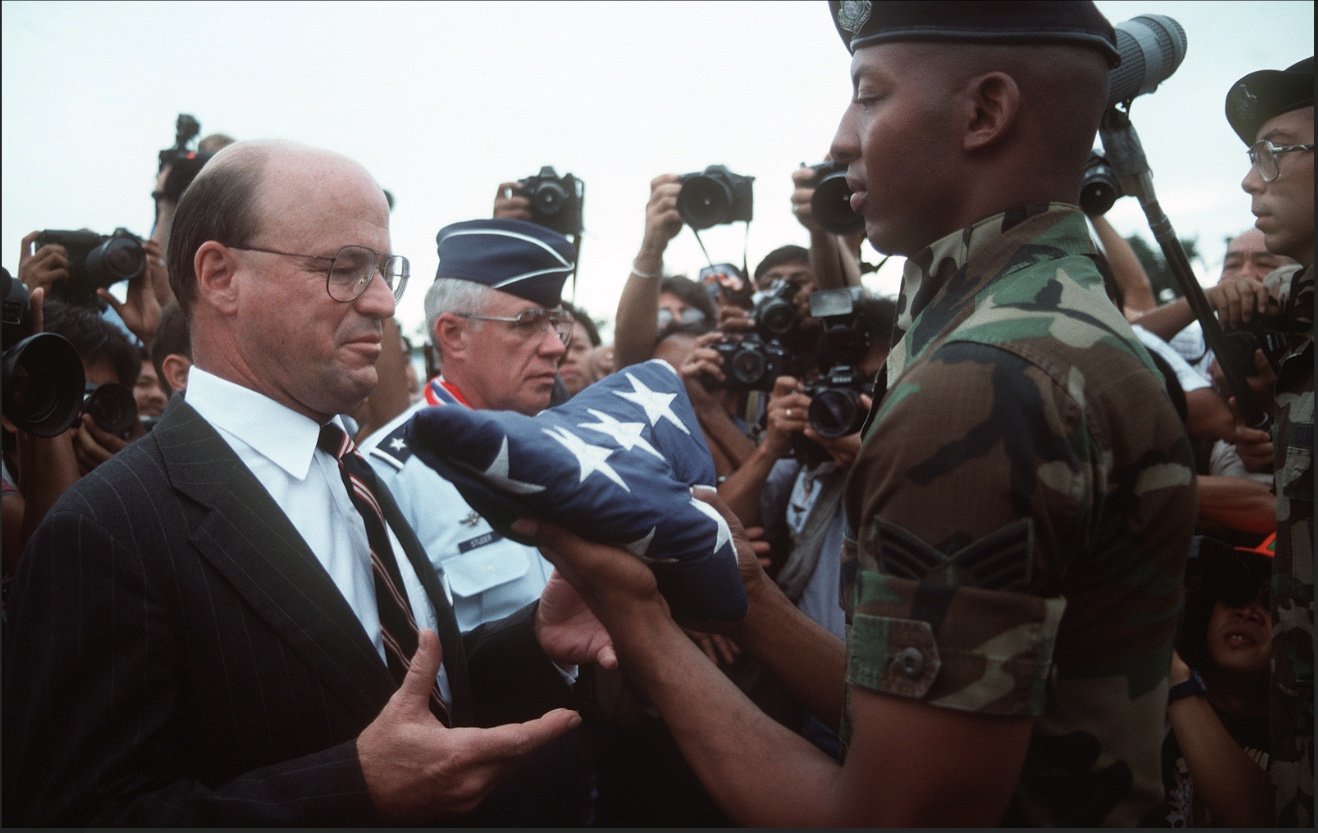30 Years Ago, Mount Pinatubo Exploded 28 Miles Into the Sky — and Buried a US Air Force Base

A helicopter crew member stands beside his UH-1N Iroquois helicopter as he watches a cloud of ash pour from Mount Pinatubo, a volcano that came alive for the first time in over 600 years. Photo via U.S. National Archives.
On June 15, 1991, a Philippine volcano just north of Manila roared to life after a 600-year silence with one of the largest explosions ever recorded, throwing the top half of the mountain 28 miles in the air, shattering the nearby cities of San Marcelino and Botolan and, eventually, erasing a US Air Force base from the map.
For months after the eruption of Mount Pinatubo, US military crews helped search for victims, set up hospitals, and pushed supplies of food, shelter, and medicine into the country.
The Mount Pinatubo eruption was a historic humanitarian disaster, killing 847 and displacing 1.2 million from their homes. But for seismologists who warned of the eruption and US military planners who launched the massive evacuation and relief efforts, it was a hard-fought triumph.

As bad as the eruption was — and it was the worst ever recorded by modern seismology — it was also expected. By June 15, the United States Geological Survey (USGS) and the Philippine Institute of Volcanology and Seismology (PHIVOLCS) had been warning of an eruption for about 10 weeks. US military commanders at Clark Air Force Base and Filippino public officials had months to prepare plans to evacuate 250,000 people, including 15,000 American dependents.
Naval Station Subic Bay and Naval Air Station Cubi Point were chosen as evacuation sites, 25 miles between them and the volcano. The operation was aptly named Fiery Vigil.
The volcano’s first explosion came on June 12, sending ash 12 miles into the air. The Clark evacuation had finished just 48 hours before.

Then at 1:42 p.m. on June 15, a second, much larger explosion vaporized the entire top of the mountain, sending ash and two and a half cubic miles of volcanic material 28 miles into the atmosphere, collapsing the mountain into a crater that today is a large lake. Smaller eruptions followed for two months and continued to send rivers of ash, mud, and rocks into surrounding towns.
But with the fire came the flood. Typhoon Yunya also made landfall on June 15. Yunya had been simmering off the coast of the Philippines the week of the eruption and was not particularly strong. But its winds and drenching rains sent the volcano’s ash across a much wider area than scientists had expected.
Four inches of the heavy ash blanketed the region, including on Clark. Building collapses killed approximately 300 people and choked vehicle engines, leaving stranded those who had not evacuated. Lahars and flooding from Yunya’s rains destroyed every bridge within 18 miles of the mountain.

Only a few essential personnel were still on Clark. The science team was among those rescued. A USGS report recorded how close the team had come to perishing.
“They moved to the back of a cinderblock structure to maybe provide a little more protection from hot gas and ash; there was nowhere else for them to go. Fortunately, the flow stopped before it reached the building,” the report said.
After coming off duty in Desert Storm, the USS Midway led the relief operations, dubbed Operation Fiery Vigil along with the USS Abraham Lincoln, amphibious assault ship USS Peleliu, and 22 other Navy vessels. Many of the refugees were evacuated to Guam and the US mainland by the Air Force and the Navy.
When a runway could finally open, two C-5 Galaxies brought 34 pallets of excess Desert Storm rations from Dhahran, Saudi Arabia.

By the time the Midway arrived in Subic Bay, many of the refugees had already been evacuated, with about 5,000 still remaining in the Philippines by June 21. Karl Zingheim, ship historian of the USS Midway Museum, wrote: “In addition to their belongings, the Midway’s 1,823 volcano refugees carried aboard 23 cats, 68 dogs, and one gecko.”
Only 16 years after the evacuation of Saigon, more than 20,000 people were removed from the Philippines during Operation Fiery Vigil. Air and sea assistance from the Marine Corps, Navy, and Air Force all assisted with the removal of US personnel and their families from the Philippines for good.
On July 12, 1991, the US announced its forces would not return to Clark. The American flag was lowered for the last time from Clark on Nov. 26.

Lauren Coontz is a former staff writer for Coffee or Die Magazine. Beaches are preferred, but Lauren calls the Rocky Mountains of Utah home. You can usually find her in an art museum, at an archaeology site, or checking out local nightlife like drag shows and cocktail bars (gin is key). A student of history, Lauren is an Army veteran who worked all over the world and loves to travel to see the old stuff the history books only give a sentence to. She likes medium roast coffee and sometimes, like a sinner, adds sweet cream to it.
BRCC and Bad Moon Print Press team up for an exclusive, limited-edition T-shirt design!
BRCC partners with Team Room Design for an exclusive T-shirt release!
Thirty Seconds Out has partnered with BRCC for an exclusive shirt design invoking the God of Winter.
Lucas O'Hara of Grizzly Forge has teamed up with BRCC for a badass, exclusive Shirt Club T-shirt design featuring his most popular knife and tiomahawk.
Coffee or Die sits down with one of the graphic designers behind Black Rifle Coffee's signature look and vibe.
Biden will award the Medal of Honor to a Vietnam War Army helicopter pilot who risked his life to save a reconnaissance team from almost certain death.
Ever wonder how much Jack Mandaville would f*ck sh*t up if he went back in time? The American Revolution didn't even see him coming.
A nearly 200-year-old West Point time capsule that at first appeared to yield little more than dust contains hidden treasure, the US Military Academy said.












